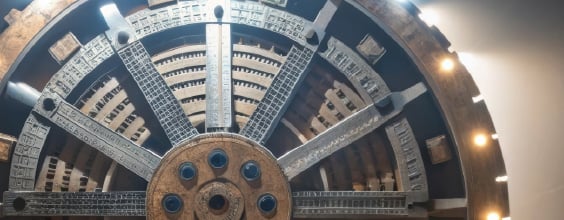Over the past decade as a special liaison to the firm’s national bridge group, Sullivan’s focus has been on inspecting everything from small culverts to well-known signature bridges.
“I lead inspections of some of the large suspension bridges in the Delaware and Philadelphia region. I also do a lot of our rope access work, too,” he said. Sullivan has Level 3 certification, the highest level recognized by the Society of Professional Rope Access Technicians (SPRAT). This means he can oversee rope access worksites, the designing of rope systems and can provide advanced rescue aid.
Sullivan has seen an increase in work with WSP’s unmanned aerial systems programs – or drones — although, as an emerging technology for bridge inspections, its use has been limited.
“We use the drones as much as we can,” he said. “But, because our inspections are federally mandated and include federal regulations, we must adhere to certain requirements, in terms of our inspection processes.” Some inspections require a hands-on approach to ensure that specific things are being examined properly and correctly measured.
That’s where the use of ropes is necessary. “A drone simply can’t replicate that physical, firsthand approach,” Sullivan added. “That said, drones have proven to be a good addition to our toolkit.”
The main advantage to using drones is that they enable “eyes on” access to areas of a bridge that are difficult and time-consuming to reach, like concrete facades, large steel towers and cables that inspectors don’t have to physically handle. Visuals from the drone also provide clients with a clearer view of what inspectors discover in the field.
“We want our teams to be safe, so we limit our time in the roadway when we can and that’s another benefit of using rope access and drones,” DeOrtentiis said. “Once you’re on that rope, you’re not in a traffic lane. It also reduces traffic issues, so it benefits everyone.”
Sometimes when new problems are found during a bridge inspection, it’s because WSP has recommended a rope access inspection, which ensures that every single inch of the structure is examined. Often it results in the discovery of issues that have been undetected for years.

















